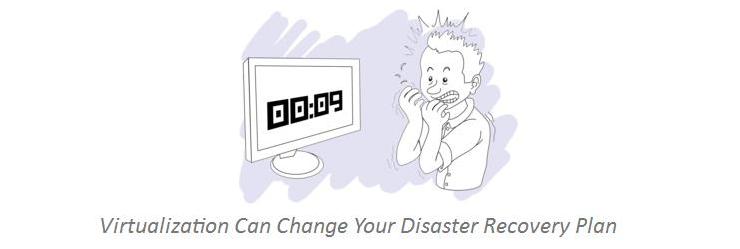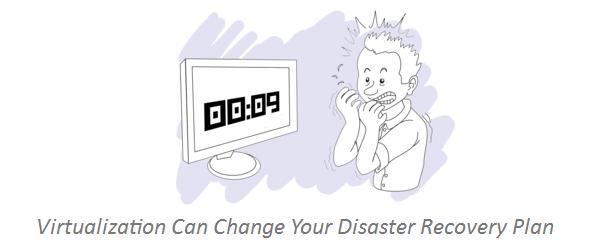Virtualization Can Change Your Disaster Recovery Plan?
 The adoption of cloud computing and virtualization is growing rapidly. But implementation of these new technologies raises concerns regarding the reliability of your data and applications accessed by the cloud. In addition, companies are also taking into consideration the high availability of information and recover from disasters, such as data loss in floods, fires and blackouts. According to the survey, 84% of companies reassessed recovery plans have virtualized their dedicated servers. This may seem a laborious task, especially with budgets shrinking year after year. But as one hour of Web server downtime can cost more than $ 62,000 for a large company, it is easy to understand how the availability – ensuring access at any time – is a critical factor.
The adoption of cloud computing and virtualization is growing rapidly. But implementation of these new technologies raises concerns regarding the reliability of your data and applications accessed by the cloud. In addition, companies are also taking into consideration the high availability of information and recover from disasters, such as data loss in floods, fires and blackouts. According to the survey, 84% of companies reassessed recovery plans have virtualized their dedicated servers. This may seem a laborious task, especially with budgets shrinking year after year. But as one hour of Web server downtime can cost more than $ 62,000 for a large company, it is easy to understand how the availability – ensuring access at any time – is a critical factor.
Not only for the revenue and employee productivity, but also for the company whose assets are less obvious metrics, such as the brand’s reputation. The update system caused, on average, 51 hours of downtime over the past 12 months, according to IT professionals who responded to the survey. When something routine and regular updates can cause so great a period of inactivity, it is vital to implement recovery capabilities to minimize the risks. These solutions must be able to recover easily applications, moving them to a server operating with minimum downtime. To maintain business and keep the critical data safe, here is the processes that should be followed:
Data Backup
Data backup is integral to a successful plan for disaster recovery. According to research on the Disaster Recovery, 56% of the virtualized data are currently covered by backup, with only 20% of the data being protected by replication.
Protection Of Mission-Critical Applications
Another fundamental aspect of a successful plan for disaster recovery is the protection of mission-critical applications in a virtualized environment. Even if half of organizations have begun to use the cloud for mission-critical applications, there is often hesitation because of security risks and the perceived lack of control. The biggest challenge cited by IT professionals to protect critical applications in a virtual environment is the lack of monitoring tools comparable to those used to monitor physical environments, closely followed by lack of expandability.
Monitoring Of Networks and Automated Recovery
Currently, 26% of the budget of the departments are assigned to disaster recovery initiatives. However, 43% of firms reported that the budget for disaster recovery will decrease within the next 12 months. With IT departments eternally burdened, automated processes are the ideal solution to reduce the recovery time with minimal human resources.
Testing
One of the most important things that IT can do to assess their level of preparedness is to conduct regular testing of disaster recovery. 51% of global companies thoroughly test the disaster recovery plan every six months, and 31% do so more frequently, according to research. The tests can point improvement. The adoption of virtualization technologies and cloud computing can offer greater flexibility to IT services and reduce operating expenses. But to reap these benefits, companies need to address the challenges of technology, reviewing plans for disaster recovery. An effective plan must include backup and protection of confidential data, proactive monitoring of networks and automated recovery, and testing to minimize the problems of availability and ensure maximum activity.
- How Cloud Computing Is Changing The Labor Market - March 25, 2015
- Adopting Infrastructure as a Service Can be a Good Deal - March 17, 2015
- Will Virtualize? Take These Six Points Into Consideration - March 12, 2015
